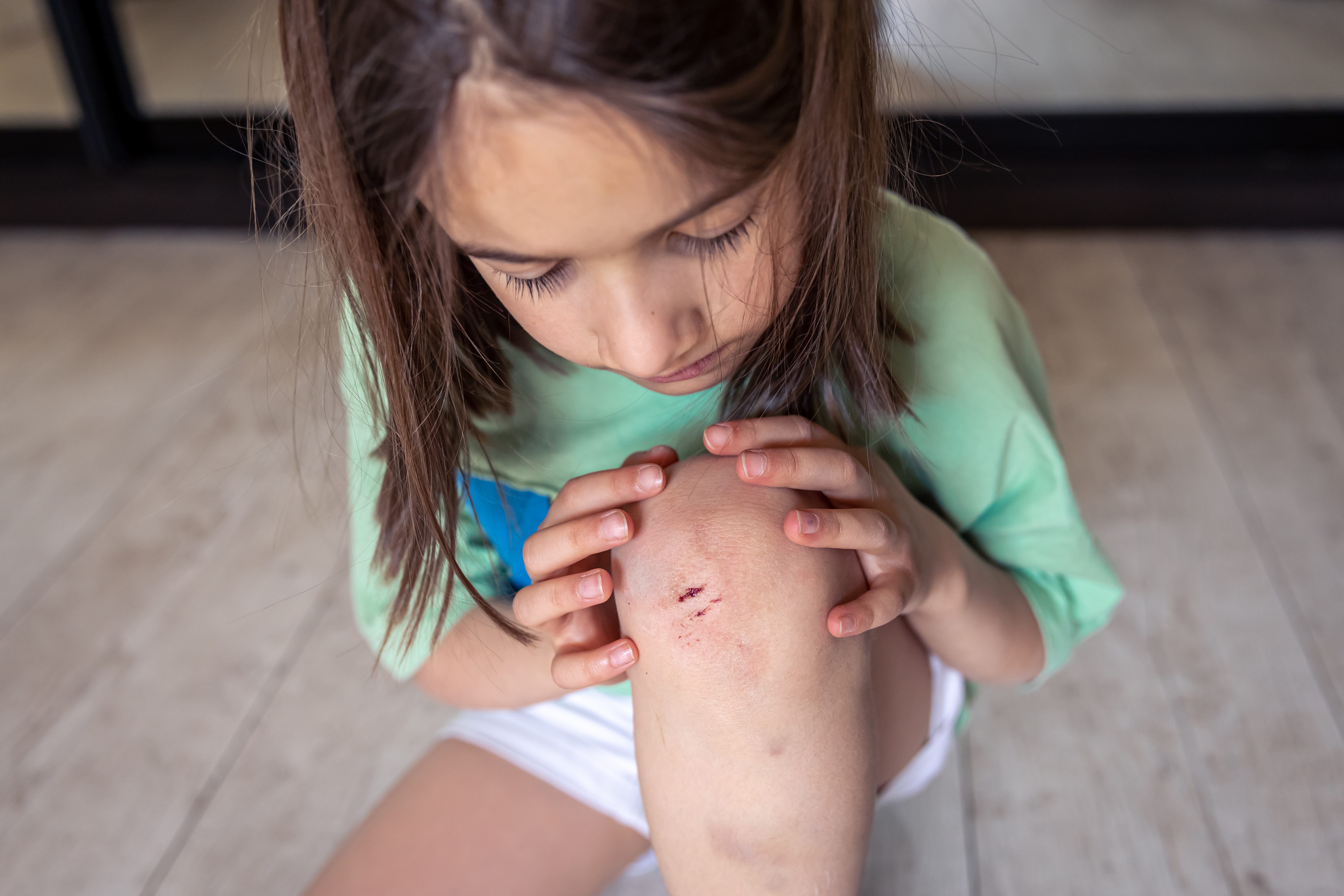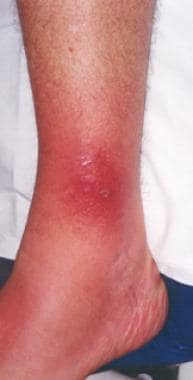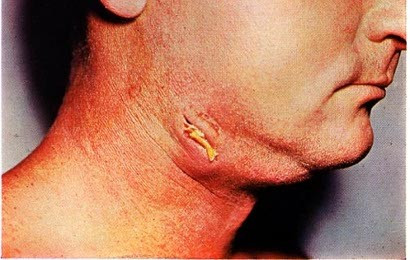Definisi
Limfangitis pada anak adalah peradangan atau infeksi saluran limfa atau pembuluh limfatik yang terjadi pada anak. Pembuluh limfatik merupakan bagian dari sistem limfatik, yang memiliki peran penting bagi sistem kekebalan tubuh.
Sistem limfatik terdiri dari kelenjar dan pembuluh yang bekerja sama untuk mengalirkan cairan dari kelenjar getah bening ke sistem peredaran darah. Organ yang membentuk sistem limfatik, antara lain:
- Tonsil atau amandel, adalah sebuah organ yang terletak di belakang tenggorokan.
- Limpa, adalah organ yang terletak di sisi kiri perut dan berfungsi sebagai penyaring sel darah merah.
- Timus, adalah sebuah kelenjar yang terdapat di tengah rongga dada yang membantu sel darah putih untuk berkembang.
Sistem limfatik memiliki fungsi sebagai bagian dari sistem kekebalan tubuh, mengangkut lemak, cairan, protein, dan zat lainnya untuk disaring. Jika ditemukannya benda asing atau kuman yang membahayakan tubuh, maka tubuh akan menghasilkan lebih banyak sel darah putih untuk melawan infeksi.
Limfangitis dapat terjadi akibat infeksi bakteri, virus, ataupun parasit. Namun, sering kali limfangitis terjadi akibat masuknya kuman ke dalam pembuluh limfatik melalui luka di kulit yang tidak mendapatkan pengobatan yang tepat. Limfangitis sering mengenai orang dewasa, namun anak-anak dan usia remaja juga dapat mengalami infeksi tersebut.
Penyebab
Penyebab tersering terjadinya limfangitis pada anak adalah infeksi bakteri Streptococcus beta (β) Hemolitycus Grup A. Bakteri ini memiliki zat khusus di tubuhnya yang dapat membantu mereka masuk ke dalam saluran limfatik. Limfangitis yang disebabkan bakteri tersebut dapat berkembang dengan cepat dan berisiko menyebabkan komplikasi yang serius.
Selain itu, bakteri Staphylococcus aureus juga dapat menyebabkan limfangitis, meskipun bakteri ini lebih sering ditemukan pada kasus pasien dengan selulitis akibat infeksi bakteri Streptococcus beta (β) Hemolitycus Grup A.
Organisme lain yang dapat menyebabkan limfangitis, antara lain:
- Pseudomonas sp
- Streptococcus pneumoniae
- Aeromonas hydrophila
- Wuchereria bancrofti
Limfangitis juga dapat terjadi akibat masuknya kuman melalui infeksi atau luka lain di tubuh ke pembuluh limfatik. Anak-anak yang suka bermain di luar ruangan tanpa alas kaki juga dapat mengalami limfangitis karena jamur penyebab limfangitis dapat ditemukan di tanah.
Faktor Risiko
Beberapa faktor yang dapat meningkatkan risiko anak mengalami limfangitis adalah:
- Memiliki penyakit diabetes
- Imunodefisiensi (kondisi ketika tubuh tidak mampu melawan infeksi)
- Infeksi varicella (cacar air)
- Penggunaan obat golongan steroid dalam jangka waktu lama
- Penyakit HIV
- Bermain di luar ruangan tanpa alas kaki
Gejala
Gejala limfangitis pada anak biasanya bersifat ringan hingga berat. Gejalanya sering kali berbentuk seperti kelainan pada kulit, seperti kulit kemerahan atau bengkak dan adanya garis-garis atau bercak merah.
Gejala lainnya meliputi:
- Demam
- Nyeri pada area yang mengalami infeksi
- Adanya pembesaran pada kelenjar getah bening, biasanya di area lipat paha, ketiak, dan siku
- Jantung berdebar (takikardia)
- Tidak nafsu makan
- Kelelahan
- Sakit kepala
Diagnosa
Untuk mendiagnosis limfangitis, dokter akan melakukan wawancara medis (anamnesis), pemeriksaan fisik, dan pemeriksaan penunjang lainnya pada anak. Dokter akan menanyakan mengenai gejala yang muncul, riwayat penyakit anak, atau riwayat pengobatan yang pernah atau sedang dilakukan.
Pada saat pemeriksaan fisik, dokter akan memeriksa bagian leher, ketiak, lipat paha, dan bagian tubuh lainnya untuk merasakan adanya benjolan atau pembesaran pada kelenjar getah bening.
Bila diperlukan, dokter juga akan melakukan pemeriksaan penunjang, seperti:
- Pemeriksaan darah, untuk melihat tanda-tanda infeksi
- Pemeriksaan biopsi, untuk mengetahui penyebab dari pembengkakan
- Pemeriksaan radiologi, untuk melihat area yang mengalami limfangitis lebih jelas
Tata Laksana
Pengobatan limfangitis pada anak harus segera dilakukan untuk mencegah terjadinya komplikasi dan obat yang diberikan harus sesuai dengan organisme penyebab infeksi serta gejalanya.
Anak-anak dengan kondisi yang stabil, berusia > 3 tahun, tidak demam, dan tidak mengalami dehidrasi dapat ditatalaksana dengan antibiotik oral/minum (bila infeksi disebabkan oleh bakteri). Pada kondisi ini, anak dapat melakukan rawat jalan.
Dokter juga dapat merekomendasikan obat lain, seperti:
- Antiviral, jika kasus limfangitis disebabkan infeksi virus
- Antijamur, jika kasus limfangitis disebabkan infeksi jamur
- Obat analgesik untuk meredakan rasa nyeri
- Obat anti-radang untuk mengatasi peradangan dan pembengkakan
- Obat penurun panas
Untuk membantu mengurangi rasa nyeri dan peradangan, Anda juga dapat memberikan kompres hangat pada anak. Jika memungkinkan, minta anak untuk meninggikan area yang terinfeksi dan meminimalisir gerakan (imobilisasi) untuk mengurangi penyebaran infeksi, rasa nyeri, dan pembengkakan.
Baca Juga: Penyakit Sepsis Neonatorum - Definisi, Penyebab, Gejala, dan Tata Laksana | AI Care (ai-care.id)
Komplikasi
Limfangitis yang tidak mendapatkan terapi yang tepat dapat berisiko menyebabkan munculnya berbagai komplikasi, seperti:
- Memburuknya kondisi selulitis
- Kematian jaringan sekitar yang terinfeksi
- Terbentuknya luka ulserasi (luka yang bersifat meluas hingga ke kulit bagian dalam)
- Bakteremia (adanya bakteri pada aliran darah)
- Sepsis, sebuah kondisi ketika tubuh memiliki respon yang berlebihan terhadap infeksi dan bersifat mengancam nyawa
Pencegahan
Limfangitis sulit untuk dicegah karena kondisi ini dapat muncul akibat komplikasi dari penyakit lain atau adanya luka di kulit. Pencegahan yang dapat dilakukan untuk mencegah limfangitis pada anak salah satunya adalah dengan menjaga kebersihan kulit.
Berikut beberapa hal yang bisa Anda lakukan untuk mengurangi risiko anak terkena limfangitis:
- Rutin menggunakan losion atau pelembap jika anak memiliki kulit kering
- Gunakan pelindung saat anak bermain di luar ruangan
- Jika anak mengalami luka, segera obati
- Ingatkan anak untuk selalu menggunakan alas kaki saat beraktivitas di luar ruangan
- Hindari berenang bila memiliki luka di kulit
- Jaga kebersihan rumah agar anak terhindar dari gigitan serangga ataupun nyamuk
- Selalu berhati-hati saat berada di dekat hewan
Kapan Harus ke Dokter ?
Segera konsultasikan ke dokter jika anak menunjukkan gejala limfangitis atau apabila gejala tidak kunjung membaik setelah beberapa hari pengobatan.
Terdapat beberapa gejala yang perlu Anda perhatikan pada anak, antara lain:
- Ruam kemerahan yang melebar pada area infeksi
- Adanya cairan atau nanah yang keluar dari pembuluh limfa yang terinfeksi
- Demam tinggi (lebih dari 38 derajat Celcius)
Bila anak merasakan gejala di atas, segera kunjungi dokter. Limfangitis harus mendapatkan penanganan yang cepat dan tepat untuk mencegah terjadinya komplikasi yang serius.
Anda juga dapat melakukan konsultasi terkait kondisi limfangitis pada anak dengan mengunduh aplikasi Ai Care di Playstore atau Appstore.
Mau tahu informasi seputar penyakit lainnya? Cek di sini, ya!
- dr Nadia Opmalina
Management of Infectious Lymphadenitis in Children. (2021). Retrieved 22 March 2023, from https://www.ncbi.nlm.nih.gov/pmc/articles/PMC8535130/
What is Lymphangitis. (2021). Retrieved 22 March 2023, from https://www.webmd.com/a-to-z-guides/what-is-lymphangitis
Acute Lymphangitis. (2020). Retrieved 22 March 2023, from https://www.ccjm.org/content/87/3/129
Lymphangitis. (2022). Retrieved 22 March 2023, from https://www.mountsinai.org/health-library/diseases-conditions/lymphangitis
Lymphangitis. (2018). Retrieved 22 March 2023, from https://www.healthline.com/health/lymphangitis
What is Lymphangitis. (2022). Retrieved 22 March 2023, from https://www.medicalnewstoday.com/articles/325069
Lymphangitis Clinical Presentation. (2018). Retrieved 22 March 2023, from https://emedicine.medscape.com/article/966003-clinical#:












